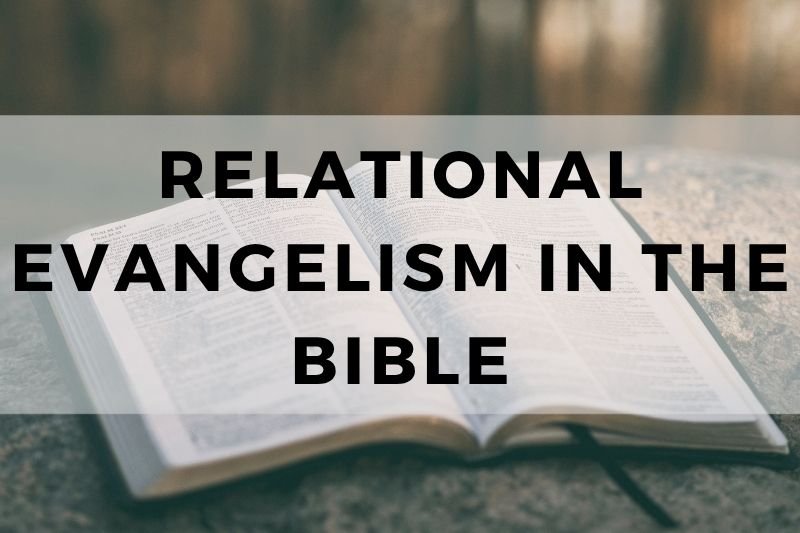
Evangelism is not always about preaching to crowds—it often begins with a conversation, a relationship, and a personal connection. Throughout Scripture, we see powerful examples of people reaching others with the gospel not through grand speeches, but through relational encounters that led to life transformation. This approach, known as relational evangelism, emphasizes genuine connection, trust, and care. It’s about meeting people where they are, walking with them, and pointing them to Christ through authentic relationships. In this article, we’ll explore relational evangelism in the Bible, examining how ordinary interactions were used by God to bring others into His kingdom.
Introducing Relational Evangelism in the Bible
Relational evangelism is sharing the gospel through meaningful, personal relationships. It’s not based on cold calls or street preaching, but on building trust, showing genuine care, and engaging in real-life conversations. This method allows the message of Christ to flow naturally within the context of everyday life.
The Bible shows that relational evangelism is effective because it is personal, intentional, and rooted in love. Jesus Himself modeled this by dining with sinners, asking questions, and meeting individual needs. Relational evangelism takes time but often leads to lasting spiritual impact. It works through family, friendships, coworkers, and even casual encounters—making it one of the most accessible and practical forms of evangelism today.
Biblical Examples of Relational Evangelism
#1. John 1:40–42
“Andrew, Simon Peter’s brother, was one of the two who heard what John had said and who had followed Jesus. The first thing Andrew did was to find his brother Simon and tell him, ‘We have found the Messiah’ (that is, the Christ). And he brought him to Jesus.”
Andrew met Jesus and immediately went to tell his brother. This shows that relational evangelism often starts with family. He didn’t debate or preach—he simply shared his experience and brought Simon to meet Jesus personally. Effective relational evangelism begins with genuine encounters with Christ and a desire to share it with those closest to us. It is natural, not forced. Andrew didn’t need theological training; his personal conviction was enough to spark a transformation. This example highlights how impactful it can be to introduce someone we know to Jesus through a trusted relationship.
#2. John 4:7–29
“When a Samaritan woman came to draw water, Jesus said to her, ‘Will you give me a drink?’ … Many of the Samaritans from that town believed in him because of the woman’s testimony…”
Jesus initiated a simple conversation by asking for a drink. He connected with the woman at a personal and cultural level, despite social barriers. Their dialogue led to her transformation and a ripple effect throughout her community. Relational evangelism often begins with a question, a shared moment, or a willingness to listen. Jesus didn’t start with condemnation but with curiosity. The woman’s testimony—based on a personal encounter—was powerful enough to influence many. This shows that anyone, even those with a broken past, can become effective witnesses when they share what Jesus has done in their life.
#3. Mark 5:18–20
“Jesus did not let him [the man who had been demon-possessed] go with him, but said, ‘Go home to your own people and tell them how much the Lord has done for you…’ So the man went away and began to tell in the Decapolis how much Jesus had done for him. And all the people were amazed.”
Jesus sent the man back to his community rather than allowing him to follow. Why? Because his transformation was the testimony. His story had the power to impact those who knew his past. Relational evangelism often has the strongest impact when people see real change in someone they already know. This man didn’t need to go far—his own people were the mission field. Evangelism through relationships isn’t limited by training or titles; it thrives in ordinary settings where personal transformation is visible and undeniable.
#4. Acts 8:26–35
“Then Philip ran up to the chariot and heard the man reading Isaiah the prophet. ‘Do you understand what you are reading?’ Philip asked… Then Philip began with that very passage of Scripture and told him the good news about Jesus.”
Philip approached the Ethiopian eunuch with a question. He didn’t barge in with a sermon—he engaged the man’s current interest and need. The relationship was brief but respectful and direct. Relational evangelism doesn’t always require long-term relationships; it requires attentiveness, respect, and responsiveness. Philip met the man where he was, spiritually and physically. He connected through Scripture, addressed questions, and shared Jesus. This passage teaches us to watch for divine opportunities and to build rapport quickly by listening and responding with clarity and compassion.
#5. Acts 10:24–48
“Cornelius was expecting them and had called together his relatives and close friends… While Peter was still speaking these words, the Holy Spirit came on all who heard the message.”
Cornelius invited Peter into his home and gathered people he trusted. Peter shared the gospel, and the Spirit moved powerfully. Relational evangelism multiplies when people open their homes and networks to gospel conversations. Cornelius used his influence to expose others to the truth. Peter, though initially hesitant, crossed cultural lines and formed relational trust. This account teaches us that openness, hospitality, and obedience can lead to entire households and networks encountering Christ. The gospel spreads quickly when it’s shared within trusted circles.
#6. Luke 5:27–29
“Then Levi held a great banquet for Jesus at his house, and a large crowd of tax collectors and others were eating with them.”
Levi, after following Jesus, invited his friends to a dinner where Jesus was the guest of honor. Instead of isolating himself from his old life, he used his existing relationships for kingdom purposes. Relational evangelism creates natural spaces where unbelievers can encounter Jesus through shared life events. Levi didn’t start with a Bible study—he started with a meal. He leveraged his home and relationships to create a setting where Jesus could speak into lives. Meals, parties, and casual settings are strategic in connecting Jesus to people through relationship.
#7. John 3:1–21
“Now there was a Pharisee, a man named Nicodemus who was a member of the Jewish ruling council. He came to Jesus at night…”
Nicodemus sought Jesus privately, curious but cautious. Jesus met him with truth and grace. Their one-on-one conversation became one of the most theologically rich dialogues in Scripture. Relational evangelism allows space for honest questions and private seeking without pressure. Jesus didn’t shame Nicodemus for coming at night. He answered deeply and invited him into the light. This reminds us that not every conversation needs to be public or immediate. Trust grows in quiet conversations where doubts are welcomed and truth is revealed patiently.
#8. Acts 16:13–15
“On the Sabbath we went outside the city gate to the river, where we expected to find a place of prayer… The Lord opened her [Lydia’s] heart to respond to Paul’s message.”
Paul met Lydia in a casual prayer setting by the river. He spoke with the group of women gathered there, and Lydia responded. Her conversion led to her entire household being baptized. Relational evangelism thrives in natural, low-pressure environments where spiritual openness already exists. Paul didn’t force a meeting—he joined one. Lydia’s response was the result of both God’s work and Paul’s relational approach. This scene shows how God opens hearts in the context of respectful conversation and community presence.
#9. Luke 19:1–10
“When Jesus reached the spot, he looked up and said to him, ‘Zacchaeus, come down immediately. I must stay at your house today.’”
Jesus invited Himself into Zacchaeus’s life, breaking social norms to spend time with someone rejected by others. That relationship led to repentance and life change. Relational evangelism reaches those who feel unworthy by extending friendship and personal presence. Zacchaeus was transformed not by judgment, but by acceptance and proximity to Jesus. By going to his house, Jesus dignified him. Evangelism works powerfully when we enter people’s lives with humility, friendship, and love.
#10. 2 Timothy 1:5–6
“I am reminded of your sincere faith, which first lived in your grandmother Lois and in your mother Eunice and, I am persuaded, now lives in you also.”
Paul highlights the generational faith passed from Lois to Eunice to Timothy. Their influence was deeply relational, formed in the home through daily life and spiritual consistency. Relational evangelism is most powerful when modeled in the home through authentic faith and intentional teaching. Timothy didn’t become a church leader overnight—it started with faithful women investing in him from childhood. This example reminds us that evangelism begins long before the mission field; it begins in families, with love, Scripture, and godly example.
Closing Thoughts
Relational evangelism is deeply rooted in Scripture and modeled by Jesus and His followers. It shows us that evangelism is not limited to public preaching or special events—it flourishes in homes, conversations, friendships, and daily life. When we prioritize genuine connection and allow the gospel to flow through our relationships, we reflect the heart of Christ. As believers, we are called to be present, to listen, and to share the good news with love and authenticity. Every relationship becomes an opportunity for eternal impact when guided by prayer, compassion, and the truth of God’s Word.
